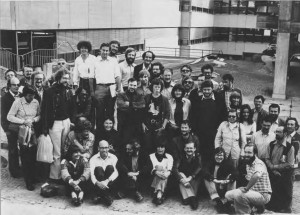 SULA is a biennial gathering on the Semantics of Underrepresented Languages in the Americas. It was founded 15 years ago at UMass Amherst. From the very start, one of the goals of SULA was to emphasize that doing theoretical work isn’t incompatible with being actively engaged in language documentation, community work, and revitalization. This is why SULA always includes at least one event where native speakers of indigenous languages give their very own perspective on linguistic research on their language.
SULA is a biennial gathering on the Semantics of Underrepresented Languages in the Americas. It was founded 15 years ago at UMass Amherst. From the very start, one of the goals of SULA was to emphasize that doing theoretical work isn’t incompatible with being actively engaged in language documentation, community work, and revitalization. This is why SULA always includes at least one event where native speakers of indigenous languages give their very own perspective on linguistic research on their language.
In addition to several sessions on indigenous languages of the Americas, the first SULA also had two sessions on African American English (AAE), one session on Yiddish, and one or two sessions on ASL (American Sign Language). Those languages do not only share with native American languages the fate of being underrepresented in theoretical linguistic research, but also the predicament of being underrepresented in the way we teach linguistics to American students. For example, American students are most likely to hear about AAE in a sociolinguistic class, and they are most likely to be presented with samples of male youth language there. The reality is that AAE is spoken by men and women of all ages in all kinds of settings, including church settings. AAE has still to find its place in mainstream linguist research and teaching. ASL was in a similar situation some years ago, but has now taken off in a big way. Still, none of those languages feature prominently in run-of-the-mill introductions to linguistics, syntax, or semantics. There still isn’t enough theoretical research, and they are not included as American languages in standard curricula in this country.
To address the status of minority languages and non-standard dialects in the Americas, it’s also important NOT to leave research on those languages in their separate corners. This research should be as much part of the main stream as research on Standard English. To work towards that goal, the first SULA (and all subsequent SULAs, except the last one, I think), also included as commentators semanticists who were just armchair semanticists: Barbara Partee was there, also Irene Heim, and myself as co-organizer (with Lisa Matthewson). Those armchair semanticists were either local, or in later years, we would find our own funding to attend this conference, which was obviously highly relevant to our own work. We also helped with reviewing and commenting on abstracts. We wanted to be at this conference because we knew that a lot of original research in semantics came out of it and because we wanted our research and teaching to be informed by those results.
To give research on the semantics of underrepresented languages a future, we knew that we needed to interest the youngest generation of linguists in this enterprise. We did this by including graduate students as invited speakers, alongside more senior scholars.


